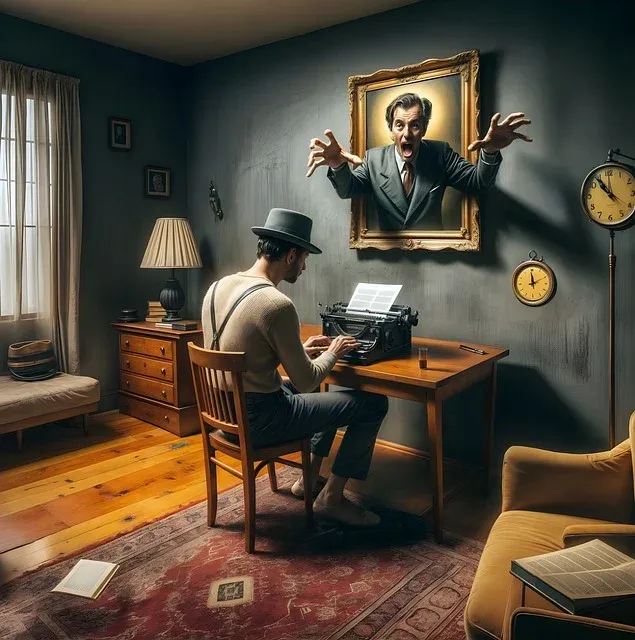Creative writing is not just about penning down words; it's a journey into the depths of imagination, a voyage where words become bridges to worlds unknown. In this expansive exploration, we delve into the essence of creative writing, uncovering its nuances, techniques, and transformative potential. From crafting compelling narratives to evoking emotions, creative writing is both an art and a skill, offering a canvas for boundless expression.
Understanding Creative Writing
At its core, creative writing is the art of inventing stories, characters, and settings, fueled by imagination and crafted through language. Unlike academic or technical writing, which focuses on conveying information or arguments, creative writing seeks to entertain, inspire, and provoke thought. It encompasses various forms such as fiction, poetry, drama, and creative nonfiction, each offering unique avenues for expression.
Creative writing begins with a spark—an idea, an image, or a fleeting thought. This initial inspiration ignites the creative process, which involves brainstorming, outlining, drafting, revising, and polishing. Writers often draw from personal experiences, observations, and emotions, infusing their work with authenticity and depth. However, imagination plays a pivotal role, enabling writers to transcend reality and explore fantastical realms.
Crafting Compelling Characters
Characters are the heart and soul of any narrative, driving the plot forward and captivating readers' imaginations. Whether heroes, villains, or ordinary individuals, well-developed characters possess depth, complexity, and relatability. Writers breathe life into their creations through vivid descriptions, nuanced dialogue, and revealing actions, allowing readers to empathize, connect, and invest in their journey.
Settings serve as the backdrop for stories, shaping mood, atmosphere, and tone. Whether a bustling cityscape, a serene countryside, or a distant planet, immersive worlds transport readers to new realities, sparking their imagination and enriching the narrative experience. Through detailed descriptions and sensory imagery, writers bring these environments to life, evoking a sense of place and wonder.
The plot is the roadmap of a story, guiding readers through a sequence of events, conflicts, and resolutions. From inciting incidents to climactic showdowns, effective storytelling hinges on compelling plot development and well-paced narrative structure. Writers employ techniques such as foreshadowing, plot twists, and subplots to keep readers engaged and invested in the outcome.
Creative writing encompasses a diverse range of genres and styles, each with its own conventions, tropes, and audience expectations. Whether romance, mystery, science fiction, or literary fiction, writers must familiarize themselves with the characteristics of their chosen genre while infusing their work with a unique voice and perspective. Style encompasses elements such as tone, diction, and narrative voice, shaping the overall aesthetic and impact of the writing.
Harnessing the Power of Language
Language is the primary tool of the writer, wielded with precision and imagination to evoke emotions, paint vivid imagery, and convey meaning. Through metaphor, simile, symbolism, and other literary devices, writers imbue their work with layers of depth and complexity, inviting readers to interpret and engage with the text on multiple levels. Mastery of language enables writers to craft prose that resonates, leaving a lasting impression on readers' minds and hearts.
Embracing Revision and Feedback
Revision is an integral part of the writing process, allowing writers to refine their ideas, clarify their message, and polish their prose. Through multiple drafts and revisions, writers hone their craft, tightening plot holes, strengthening characterization, and sharpening dialogue. Feedback from peers, mentors, and editors provides valuable insights and perspectives, helping writers identify blind spots and areas for improvement.
Navigating Writer's Block and Challenges
Every writer encounter obstacle on their creative journey, from writer's block to self-doubt and rejection. Learning to navigate these challenges with resilience and perseverance is essential for sustained growth and success. Strategies such as freewriting, brainstorming, and seeking inspiration from diverse sources can reignite creativity and overcome mental barriers.
The Intersection of Creativity and Self-Expression
Creative writing is not just a means of storytelling; it's a form of self-expression, allowing writers to explore their identity, beliefs, and emotions. Through the act of writing, individuals cultivate self-awareness, empathy, and introspection, fostering personal growth and catharsis. Whether journaling, memoir, or autobiographical fiction, creative writing serves as a mirror reflecting the complexities of the human experience.
In the tapestry of human expression, creative writing stands as a vibrant thread, weaving together imagination, emotion, and intellect. From the whispers of ancient myths to the echoes of modern verse, the power of storytelling transcends time and space, connecting us to the collective tapestry of humanity.
As we embark on our own creative odyssey, let us embrace the transformative potential of words, for in the act of creation, we discover the boundless depths of our imagination and the infinite possibilities of the human spirit.
CLICK HERE TO GET A PROFESSIONAL ARTIST FOR CREATIVE WRITING SERVICES.














No comments:
Post a Comment